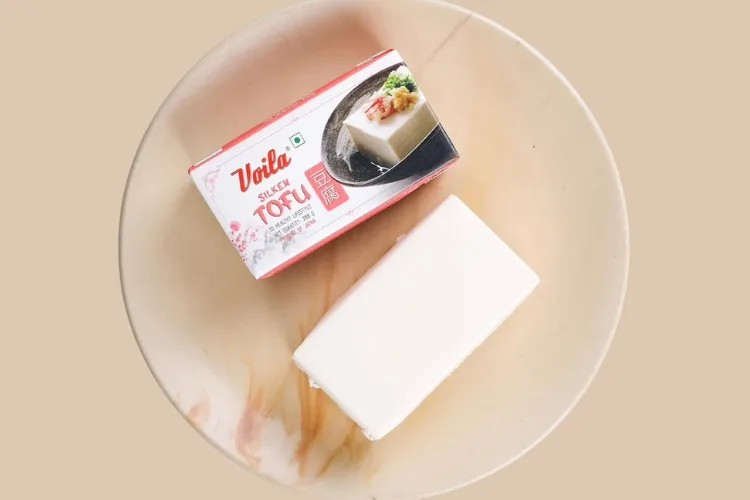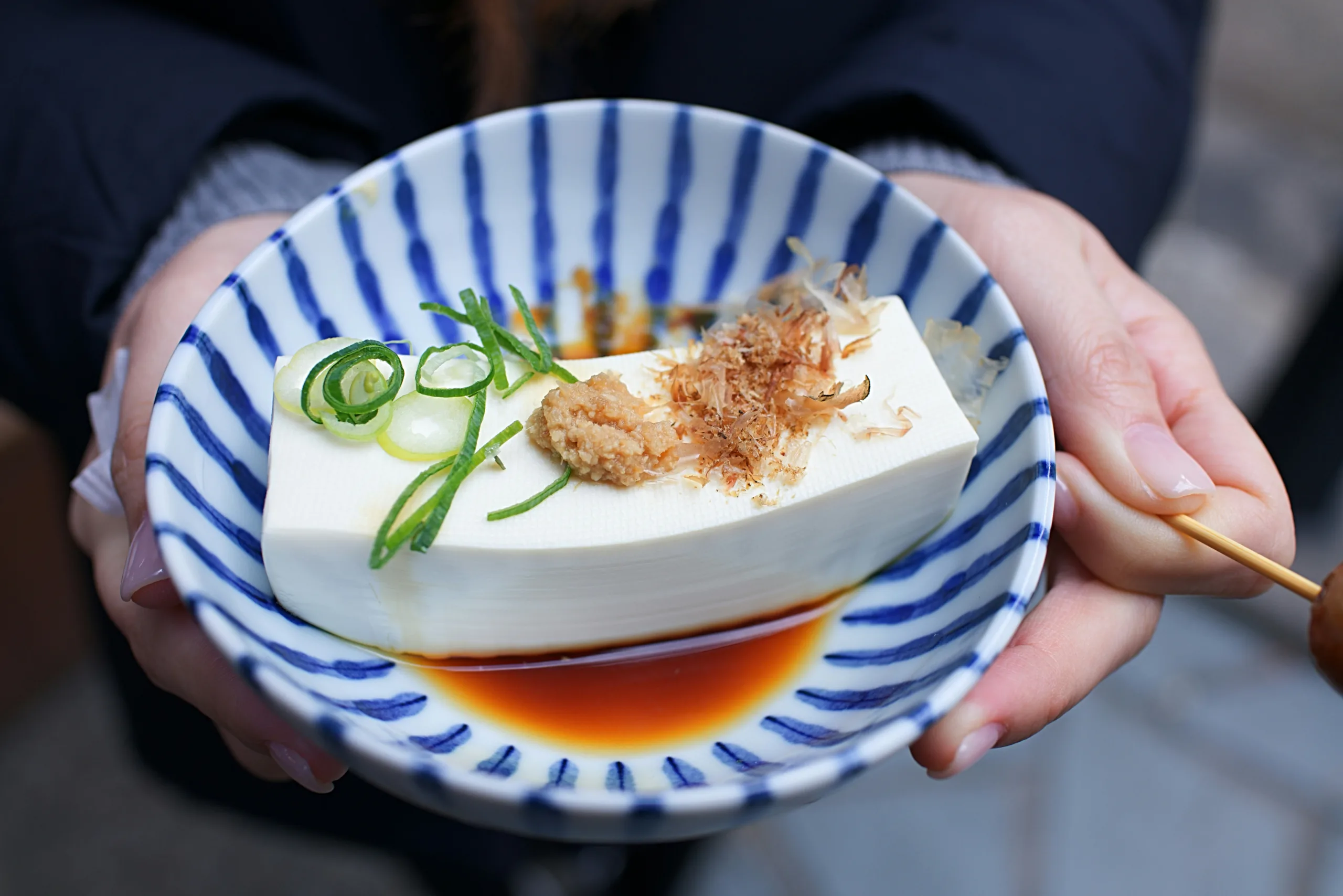Tofu: From Ancient Origins to Modern Delicacy
Introduction
Has anyone heard about a super food called Tofu? Well, if not, we are about to learn about it in today’s article.
Tofu is one such food product that is derived from soybean, a bean that contains high amount of protein and also many more nutrients beneficial for our health
When it comes to versatile and nutritious foods, tofu often takes center stage among plant-based proteins. This soy-based protein has gained popularity in recent years, captivating the taste buds of both meat lovers and non-meat lovers alike.
In this article, we will explore the origins of tofu, learn about the intricate process by which it is made, and find out the numerous benefits it offers. I will also share a simple yet tasty recipe at the end of this topic on this unique food product.
So, let’s embark on this journey to discover the wonders of tofu!
The Ancient Origins of Tofu
Tofu, also known as bean curd, has a rich history that dates back over 2,000 years. Its origins can be traced to ancient China during the Han dynasty [206 BCE – 9 CE]. Legend has it that tofu was accidentally discovered by a Chinese cook [some studies say that it was a Chinese prince named Liu An who discovered it] who mixed soy milk with a natural coagulant, resulting in the formation of curds. This accidental culinary experiment gave birth to what we now know as tofu.
Over time, tofu spread across Asia, becoming a staple in many cuisines, including Japanese, Korean, and Vietnamese. Its versatility and ability to absorb flavors made it an essential ingredient in various dishes.
The Art of Making Tofu
The process of making tofu may seem complex, but it is rooted in simplicity.
- It starts with soaking soybeans, which are then ground into a smooth paste.
- The smooth paste is then mixed with water and churned to give it a milky texture.
- This milky fluid is then passed through a cloth or filter to get the soy milk.
- The soymilk paste is then cooked and mixed with a coagulant, traditionally nigari (a natural mineral-rich substance extracted from seaweed) or gypsum.
- This coagulant causes the soy milk to curdle, separating the liquid whey from the solid curds. Useful resource: Food Unfolded
- Once the curds form, they are carefully ladled into molds and pressed to remove any remaining liquid.
The length of pressing time determines the firmness of the tofu. The result is a delicate yet sturdy block of tofu that can be sliced, diced, or crumbled [scrambled like in scrambled egg] to suit various culinary creations.
Different types of tofu available, their shelf life and nutritional facts of each
There are different types of tofu available that have been prepared by different methods.
In general, the nutritional facts of a 100-gram tofu cube in the various types available worldwide are as given below- go ahead and try any one of them.
- Silken tofu: Shelf life varies, but typically 3-5 days.
- Nutritional facts per 100g:
- 8g protein,
- 2g fat, 2g carbs,
- 46 calories.
- Nutritional facts per 100g:
- Soft tofu: Shelf life around 1 week.
- Nutritional facts per 100g:
- 8g protein,
- 4g fat,
- 2g carbs,
- 61 calories.
- Nutritional facts per 100g:
- Firm tofu: Shelf life around 1-2 weeks.
- Nutritional facts per 100g:
- 12g protein,
- 6g fat,
- 2g carbs,
- 144 calories.
- Nutritional facts per 100g:
- Extra firm tofu: Shelf life around 1-2 weeks.
- Nutritional facts per 100g:
- 14g protein,
- 7g fat,
- 2g carbs,
- 144 calories.
- Nutritional facts per 100g:
- Pressed tofu: Shelf life around 1-2 weeks.
- Nutritional facts per 100g:
- 15g protein,
- 7g fat,
- 2g carbs,
- 144 calories.
- Nutritional facts per 100g:
For more on shelf-life of Tofu, you can read this article- How long does tofu last
In India, we get mostly firm and pressed tofu. Here are some brands for you that are available on Amazon [you can click the link in the image source to get it]-


Disclosure: This article contains links like above [Amazon] that when clicked and items purchased helps get this website a small commission without any extra cost to the purchaser of the item.
The Health Benefits of Tofu for both Meat Lovers and Non-Meat Lovers
Whether you’re a dedicated carnivore or a devoted vegetarian, tofu offers a plethora of health benefits that can enhance your overall well-being.
Let’s take a closer look at how tofu can positively impact both meat lovers and non-meat lovers:
For Meat Lovers:
1. High-Quality Protein: Tofu is an excellent source of plant-based protein, making it a valuable addition to any diet. It contains all nine essential amino acids, making it a complete protein comparable to meat, eggs, and dairy products.
2. Heart-Healthy: Tofu is low in saturated fat and cholesterol, making it a heart-healthy alternative to animal-based protein sources. Regular consumption of tofu has been linked to a reduced risk of heart disease.
3. Weight Management: Tofu is low in calories and high in protein, making it a satisfying and nutrient-dense food. Incorporating tofu into your meals can help you feel fuller for longer, aiding in weight management.
For Non-Meat Lovers:
1. Plant-Powered Nutrition: Tofu is a plant-based protein powerhouse, offering a wealth of essential nutrients such as iron, calcium, and magnesium. It provides a viable alternative for meeting your nutritional needs without relying on animal products.
2. Bone Health: Tofu is an excellent source of calcium, a mineral vital for strong bones and teeth. It is particularly beneficial for individuals following a vegan or dairy-free diet, as it provides a plant-based calcium option.
3. Hormone Balance: Tofu contains natural plant compounds called phytoestrogens, which have been shown to help balance hormone levels in the body. This can be especially beneficial for women experiencing menopausal symptoms.
A Nutritional Face-Off: Tofu vs. Cottage Cheese
For those seeking a dairy alternative, tofu often finds itself compared to cottage cheese. Let’s compare the nutritional facts of these two popular choices:
| Nutrient | Tofu (per 100g) | Cottage Cheese (per 100g) |
|---|---|---|
| Calories | 76 | 98 |
| Protein | 8g | 11g |
| Fat | 4g | 4g |
| Carbohydrates | 2g | 3g |
| Calcium | 350mg | 83mg |
As we can see, both tofu and cottage cheese offer valuable nutritional benefits. While cottage cheese has a slightly higher protein content, tofu boasts lower calories and higher calcium levels, making it a favorable choice for those seeking a dairy-free option.
Embrace the Versatility of Tofu
One of tofu’s greatest attributes is its ability to adapt to various cooking methods and flavor profiles. Whether you’re grilling, stir-frying, baking, or blending, tofu can be transformed into a delicious meal. Its neutral taste allows it to absorb marinades, spices, and sauces, resulting in a dish bursting with flavor.
For a quick and easy weeknight meal, try marinating tofu in a savory soy-ginger sauce, then pan-frying it until golden and crispy. Pair it with steamed vegetables and brown rice for a nutritious and satisfying dinner.
If you’re feeling more adventurous, explore the world of tofu desserts. Silken tofu can be blended with cocoa powder, sweetener of choice, and a dash of vanilla extract to create a creamy and guilt-free chocolate mousse.
A tasty recipe for you-Indian style Chinese Chilli
This recipe is one that I love to use while making a Chinese type of dish that can be eaten as it is or with bread or rice. I call it the Indian style Chinese Chilli.
So, let’s dig into it-
] Ingredients:
– 1 block of tofu, diced [200 grams]
– 1 bell pepper, thinly sliced
– 1 onion, thinly sliced
– 2 cloves of garlic, minced
– 2 tablespoons of soy sauce
– 1 tablespoon of tomato sauce
– 1 cup of baby corn, sliced
– 1 tablespoon of corn flour
– Salt to taste
– 1 tablespoon of honey
– 1 tablespoon of white sesame seeds
Instructions:
First, heat a tablespoon of oil in a large sauce pan over medium heat.
Then, add the diced tofu to the pan and cook until golden brown on all sides. Remove from the pan and set aside.
Next, in the same pan, add the sliced bell pepper, onion, and minced garlic. Sauté until the vegetables are slightly tender.
Add the cooked tofu back into the pan along with the soy sauce and tomato sauce. Stir well to coat the tofu and vegetables.
Add the sliced baby corn to the pan and mix everything together.
Season with salt to taste and drizzle the honey over the mixture. Stir well to combine. Honey adds a sweetish flavor to our dish.
Cook for an additional 2-3 minutes, allowing the flavors to meld together.
Finally, in a small bowl, add 1 tablespoon corn flour and add water to it to make a uniform paste and add this mixture to the above preparation. This will improve the consistency of the gravy, that is, you get a slightly thick gravy.
In a separate small pan, dry roast the white sesame seeds until they turn golden brown and fragrant.
Sprinkle the roasted sesame seeds over the prepared dish.
Serve hot and enjoy your delicious Indian-style Chinese chili!
Nutrition Information– what you get when you eat this:
– Serving Size: 1 cup
– Calories: 180
– Total Fat: 8g
– Sodium: 620mg
– Carbohydrates: 19g
– Fiber: 4g
– Protein: 12g
Conclusion
Tofu, with its ancient origins, intricate production process, and numerous health benefits, has secured its place as a beloved ingredient in kitchens around the world. Whether you’re a meat lover looking to diversify your protein sources or a non-meat lover seeking a nutritious alternative, tofu offers a wealth of culinary possibilities.
So, why not embrace the versatility of tofu and embark on a culinary adventure? Let this humble soy-based protein take you on a journey to discover new flavors, textures, and a world of nourishment.
Useful resource:
Final Words
My next article will be on a topic most elderly and middle-aged people would like to know about-an investigation called Angiography. Do subscribe to my notifications by clicking the notification bell and get notified as an when I publish a new article.
If you have liked this article, do send in your feedback plus any suggestions you would like to add, by responding with a comment below-

